View Frustum
Near and Far Planes
A view frustum is a truncated pyramid that determines what can
be in view. Only objects within the frustum can appear on the
screen. The camera is at the tip of the pyramid. The pyramid
extends out along the direction that the camera is looking as shown
below.
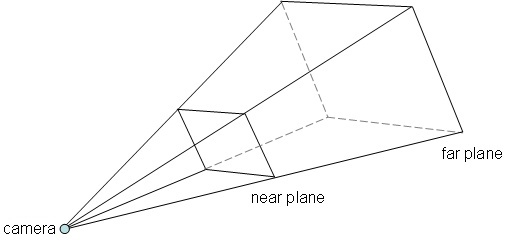
The frustum starts at the near plane and ends at the far plane.
These planes are parallel and their normals are along the direction
that the camera is looking. The length of the frustum is determined
by the distance from the camera to the near plane and the distance
from the camera to the far plane as shown below.
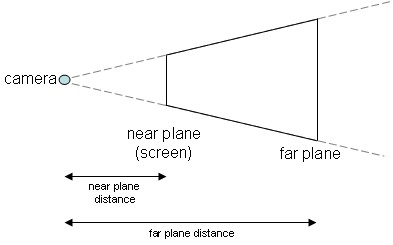
These values can be set using the
NearPlane and
FarPlane camera properties as shown below.
| [C#] |
 Copy Code Copy Code
|
scene.Camera.NearPlane =
10000;
scene.Camera.FarPlane = 10000000;
|
|
Moving the near plane too far from the camera can result in
objects frequently getting clipped by the near plane as shown
below.
|

|
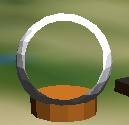
|
|
Near Plane Distance: 1 meter
|
Near Plane Distance: 10,000 meters
|
STK Engine uses multiple view
frustums to correct the precision problems of a close near
plane but it can sometimes negatively impact performance. The best
practice is to start with the default near plane distance of 1
meter and adjust it only if you need to.
Far-to-Near Plane Ratio
The camera's
FarNearPlaneRatio property is used to compute the size and
number of view frustums used for rendering. The best practice is to not
modify this property unless you have a good reason. A low
far-to-near ratio provides better depth buffer precision but may
create more view frustums, which can adversely affect
performance.
The view frustum closest to the camera has a near plane distance
defined by the
NearPlane property. Its far plane distance is computed by
multiplying its near plane distance by
FarNearPlaneRatio. The next farthest view frustum has a near
plane distance of the previous view frustum's far plane (ignoring a
slight overlap). Its far plane distance is again computed using the
far-to-near ratio. This process continues until the final view
frustum has a far plane distance that satisfies the
FarPlane property.
The following image (not to scale) shows an example where 3 view
frustums are created based on the
NearPlane,
FarPlane, and
FarNearPlaneRatio properties. Note that view frustums farther
away from the camera are larger.
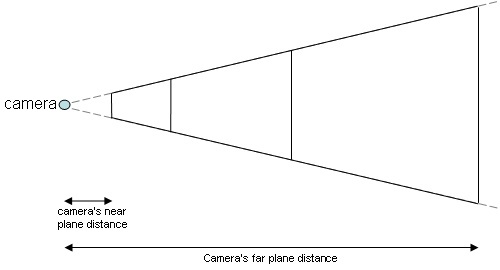
Field Of View
Depending on the window's aspect ratio, the field of view is
either the angle between the top and bottom view frustum planes, or
the left and right planes. If the y dimension of the window is
larger than the x dimension, then the field of view is the angle
between the top and bottom planes, otherwise it is the angle
between the left and right planes. Set the field of view using the
camera's
FieldOfView property. Use the
HorizontalFieldOfView and
VerticalFieldOfView properties to get the horizontal and
vertical fields of view.
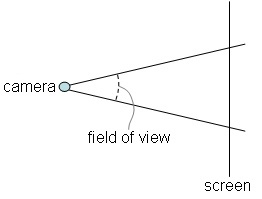
| [C#] |
 Copy Code Copy Code
|
scene.Camera.FieldOfView =
120;
|
|
Wider fields of view create bigger view frustums with more
potentially visible objects and can look distorted.
|
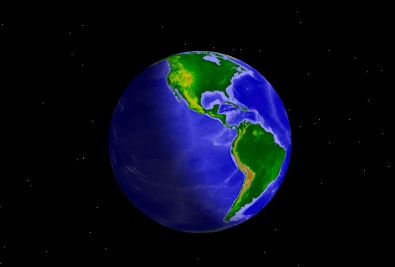
|
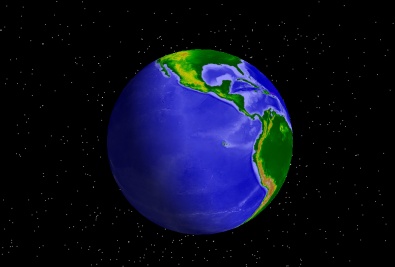
|
|
35 degree field of view
|
120 degree field of view
|
STK Programming Interface 11.0.1


 Copy Code
Copy Code





